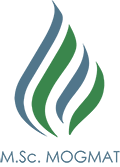Learning Outcomes
| Learning Outcomes | ||
|
The purpose of this course is to provide the student with knowledge on with the subject and make them able to:
• Crude oil and gas sale specifications • How oil and gas terminal operates and how oil and gas transportation occurs • Understand the main equipment and operations within oil and gas industry and transportation • Hazards, Risks and associated impact of oil and gas transportation • Understand HAZOP (Hazard and Operability Study) and LOPA (Layer of Protection Analysis) processes as well as be able to participate, lead, scribe at similar risk assessments. • Explain pipeline integrity management and capacity optimization opportunities • Describe how to assess the likelihood of hazardous events occurring • Understand precautions needed when applying failure frequency statistics • Explain the Barrier/”Swiss Cheese” model • Describe ‘Process Safety” and distinguish between risk and hazard • Explain importance of process safety • Explain the difference between process and occupational (personal) safety • Recognize the Major Accident Risk (MAR) process and describe risk management process
|
||
| General Skills | ||
| · Aware of how oil and gas industry operates – with an understanding of the structure and function of businesses and industries
· Able to embrace and solve problems outside their comfort zone · Teamwork spirit and courage for speak-up · Independent work of the student · Work in an international environment · Respect for diversity and multiculturalism · Exercise criticism and self-criticism · Promoting freedom, creative thinking and inducing |
||
- Course Contents
|
1. Oil and Gas Chain Overview, Onshore Processing, Separation , Heat Transfer 2. Gas Plant, Gas Handling and Conditioning 3. Oil and Gas Storage, Transport & Offloading; 4.Oil and Gas Pipeline Transportation 5. Pipeline Integrity and capacity optimization 6. Review of typical Pump Station, Gas Compression Station and Crude oil Terminal operation 7. Pipeline Operations Engineering Safety / Process Safety 8. Hazard Identification and Techniques ; 9.Consequence, Likelihood and Risk 10. Inherently Safer Design and Operations Risk Management 11. Hazard and Operability Study( HAZOP); 12.Layer of Protection Analysis (LOPA) 13. Oil and Gas Pipeline Management; |
- Teaching Methods – Assessment
| Mode of Delivery | In class | ||||||||||||||||||||||
| USE OF INFORMATION AND COMMUNICATION TECHNOLOGY | Support the learning process through the online platform e-class | ||||||||||||||||||||||
| TEACHING METHODS
|
|
||||||||||||||||||||||
| ASSESSMENT METHODS
|
Ι. Written final examination (60%) comprising: – Multiple-choice questions
II Written essay and presentation by Power Point (40%) |
- Resources
|
1. Industrial Safety Management, Hazard Identification and Risk control, L. M. Deshmukh 2. Oil and Gas Pipeline Fundamentals, by John L. Kennedy
3. The Oil & Gas Engineering Guide, by Hervé Baron
|

